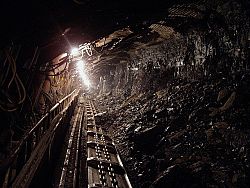

The Coal Authority has called for planners, surveyors, developers and technical consultants to ensure all issues related to historical coal mining are considered, after issuing new recommendations.
The recent investigation of a subsidence event in a North Tyneside housing development identified unrecorded mine workings at a depth exceeding 30 metres, which dated back around 120 years.
The investigations identified that the area has been overworked, with extraction rates over 70%. Workings adjacent to the recorded area had around 45-50% extraction rates. This high level of extraction resulted in wide extraction rooms and narrow residual supporting coal pillars, causing the extensive compression on the remaining coal pillars and roof instability, resulting in an underground collapse which caused subsidence affecting 35 properties in the area.
The Coal Authority engineers developed a solution to stabilise the ground by drilling and grouting the voids to ensure the area will be safe for redevelopment.
Chief Operating Officer of the Coal Authority, Simon Reed said: "We have released our initial recommendations to ensure there is awareness of the risks posed by historical coal mining legacy, in light of our findings from the recent subsidence event.
"In this instance, given the depth and age of the workings, and knowledge about risks of subsidence at the time, we cannot criticise the developer's approach taken with respect to these mining circumstances, but we must now build on this new knowledge to address these risks better moving forward.
"This was an area of unrecorded mine workings and caution must be adopted in assuming that the absence of a record means the absence of mining."
Historic mining plans give essential information for the planners and builders to determine if the area is suitable for a development, although they don't always give a true representation of the coal workings, which means that:
Therefore, it is very important to carry out desk-based research and ground investigation to determine the stability of the geological structure before carrying out the developments in areas that could be historically affected by mining.